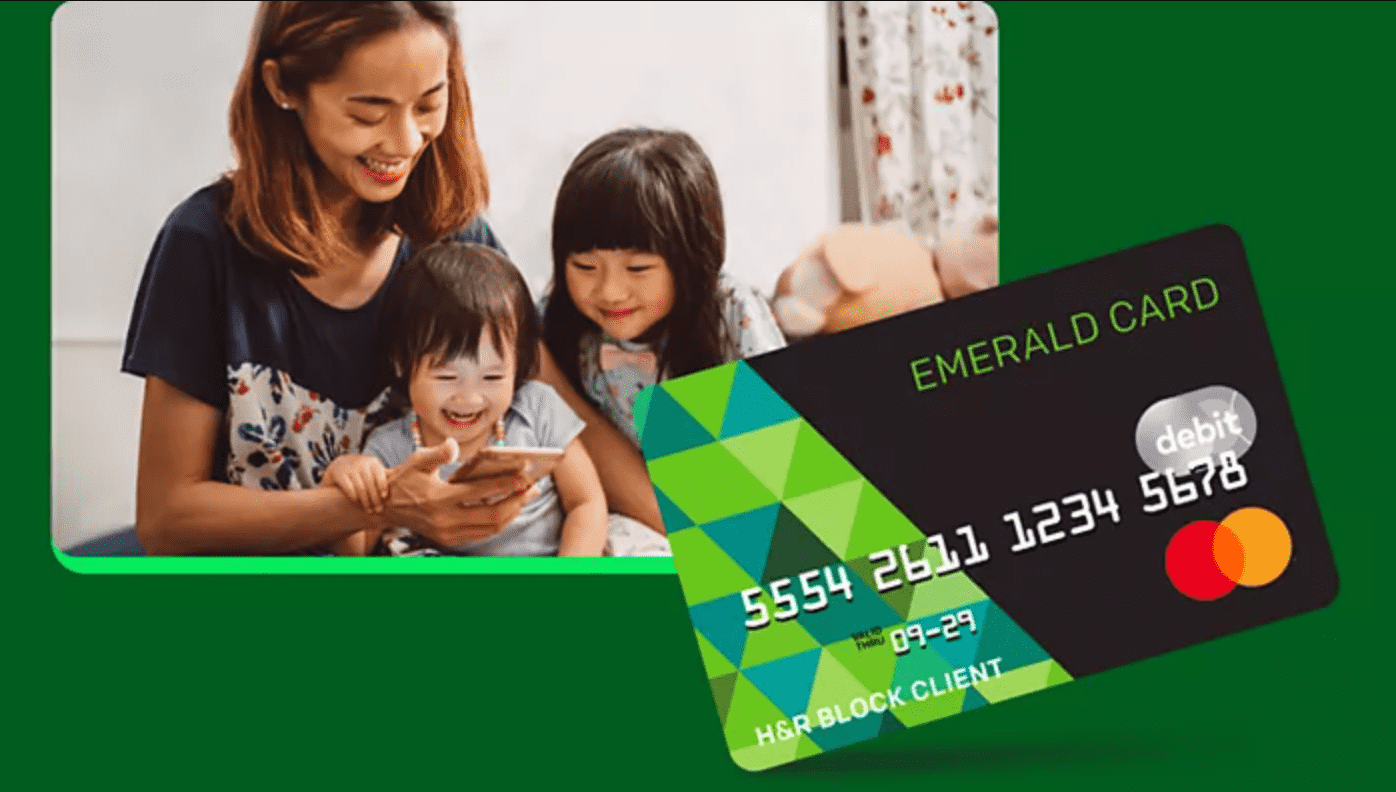Introduction
I still remember the first time I heard about refund‑loaded prepaid cards. It sounded convenient—no bank account, no waiting for paper checks, no credit check drama. Fast‑forward to 2025, and the Emerald Card has quietly become one of the most popular options for people who want quick access to their tax refunds, reliable budgeting tools, and a path for those with imperfect credit to manage money. And yet, it isn’t without its quirks. Maybe your card got declined at the checkout, or your reload fee surprised you, or you wondered why a simple balance inquiry cost a dollar. Those frustrations happen, sure—but they’re usually easy to solve once you know the ropes.
In this guide, we’ll walk through every step: what the Emerald Card is, the perks you’ll enjoy, how to activate and reload, what fees to expect, how to troubleshoot hiccups, tips for getting the most rewards, and how to stay safe. No jargon, no buried surprises—just straightforward advice to help you feel confident using your Emerald Card every day.
What Is The Emerald Card?
The Emerald Card is a prepaid Mastercard issued by MetaBank for H&R Block clients. Think of it as a reloadable debit card that you can use anywhere Mastercard is accepted—online, in stores, even at ATMs—once you load it with funds.
Key Features
- Instant access to tax refunds and other deposits once they post
- No credit check, no traditional bank account required
- FDIC®‑insured funds (up to legal limits)
- Mastercard Zero Liability fraud protection
How It Works
When you file your taxes with H&R Block and choose the Emerald Card for your refund, your money is sent directly to the card. You can also set up direct deposit for paychecks or benefits, transfer from another bank, deposit checks via mobile, or add cash at participating retailers. Once the funds clear, you just use the card like any debit card—swipe, tap, or enter your PIN.
Comparison With Other Prepaid Options
Emerald Card vs. Netspend vs. Online‑Only Debit
- Netspend has a similar fee structure but often charges per‑purchase fees and higher ATM costs.
- Some mobile‑banking apps waive most fees but require a qualifying direct deposit.
- Traditional bank debit cards offer perks like overdraft protection but need a full bank account and credit checks.
Emerald Card sits in the middle: more convenience than a bank account for people who don’t want one, and a more predictable fee schedule than many other prepaid cards.
Benefits Of The Emerald Card
Even with a handful of fees, the Emerald Card offers advantages that make it a solid choice for many.
Hassle‑Free Refund Access
No more waiting weeks for a paper check. Once the IRS or your employer sends the deposit, the funds are often available in one to two business days. That beats trekking to a check‑cashing store or waiting for a mailed check.
Built‑In Budgeting Tool
Because it’s prepaid, you can only spend what’s on the card—no overdrafts. The companion mobile app lets you view transactions in real time, track categories of spending, and receive low‑balance alerts so you never get caught off guard.
Security And Peace Of Mind
Funds are held in FDIC‑insured accounts, so your money remains protected up to the allowable limit. If someone steals your card number, Mastercard’s Zero Liability policy means you won’t be on the hook for unauthorized charges—provided you report them promptly.
Rewards Program
You earn points on qualifying purchases that can be redeemed for statement credits or gift cards. The earn rate and eligible merchants rotate with promotions, so checking the app for the latest offers can earn you a little extra back on everyday spending.
Pros & Cons
Pros
- Instant tax refund access
- No credit check or bank account required
- FDIC insurance and fraud protection
- Real‑time spending alerts in the app
Cons
- Fees for ATM withdrawals and cash reloads
- Inactivity fee if you don’t use the card for two months
- Customer service only during business hours
How To Activate & Set Up Your Emerald Card
Getting started usually takes less than five minutes.
- Activate your card. Call the activation number on the sticker or head to the activation site, enter your card details and security code, and follow the prompts.
- Set up direct deposit. Give your Emerald Card’s routing and account numbers to your employer, IRS refund processor, or benefits provider so funds post automatically.
- Download and sign into the mobile app. The Emerald Card app is available for iOS and Android. Log in to check balances, view transactions, set up alerts, and deposit checks with your camera.
Tip: Turn on low‑balance alerts so you get a notification before you accidentally try to spend more than you have.
Managing Your Emerald Card: Fees, Limits & Reloading
Knowing the fee schedule and daily limits will help you avoid surprises.
Fee Structure
- Monthly inactivity fee: $9.95 if no purchases or loads occur for 60 days
- ATM withdrawal fee: $3.50 per withdrawal (plus any ATM operator surcharge)
- Balance inquiry fee at ATMs: $1.00
- Cash reload fee: Up to $4.95 at participating retailers
- Over‑the‑counter withdrawal at a bank: 1.5 % of the amount
- Replacement card fee: $15 for expedited; no fee for standard mailing
There’s no fee each time you make a purchase, and no monthly maintenance fee as long as you keep the card active.
Reload Options
- Direct deposit: Free and fastest—ideal for tax refunds and paychecks.
- Bank transfer: Link an external account; typically takes one to three business days.
- Mobile check deposit: Snap a photo in the app; standard deposits post within one to two business days.
- Cash at retailers: Add cash at participating stores for a convenience fee.
Daily Limits
- ATM withdrawals: Up to $300 per day
- Purchases: Up to $3 500 per day total via PIN or signature
- Over‑the‑counter withdrawals: Varies by bank branch policy
Troubleshooting Common Issues
Every card has its hiccups, but most problems are easy to fix.
Declined Transactions
This usually means insufficient funds, an expired card, or merchant restrictions on prepaid cards. Check your balance, make sure the card is active, and ensure you’re using it at a place that accepts prepaid Mastercards.
Lost or Stolen Card
Report it immediately through the mobile app or by phone. A replacement is free via standard mail; expedited replacement carries a fee. Once you report it, the old card is deactivated so no one else can use it.
Delayed Deposits
Standard direct deposits post in one to two business days. If you see the deposit marked “complete” but don’t have access yet, a quick call to customer service or a review of the pending items in the app usually clears it up.
Maximizing Emerald Card Benefits
A few small habits can save you serious dollars over the year.
Take Advantage Of Rewards
Watch the promotions in your app—sometimes certain merchants or categories earn bonus points. Redeem points when you have enough for a statement credit, effectively lowering your net spending.
Avoid Unnecessary Fees
- Use ATMs in the MoneyPass network to dodge the ATM fee.
- Load via direct deposit whenever possible.
- Make at least one transaction every couple of months to skip the inactivity charge.
Stay Secure
Enable transaction alerts so you see every swipe. If something looks off, freeze the card right away in the app and report it. Regularly review your statement for unfamiliar activity.
Emerald Card FAQs
Where can I withdraw cash for free?
At ATMs in the in‑network group—just look for the network name on the ATM and in your app’s ATM locator.
How do I check my Emerald Card balance?
Use the mobile app, log in on the website, or sign up for text alerts that send your balance on demand.
Can I use the Emerald Card internationally?
Yes, it works worldwide on the Mastercard network, but foreign transactions incur a 3 % fee.
How do I close my Emerald Card account?
Call customer service and request account closure. Any remaining balance will be issued via a mailed check.
Does using the Emerald Card build my credit?
No—prepaid cards don’t report to credit bureaus, so they have no impact on your credit score.
Security & Fraud Protection
Your funds are held in FDIC‑insured accounts, providing the same level of protection as a bank account up to the insurance limit. Mastercard’s Zero Liability policy shields you from unauthorized charges, as long as you report them promptly.
Tips To Avoid Scams
- Never share your PIN or full security code with anyone.
- Beware of phishing calls or emails claiming to be from H&R Block; always verify through your app or official statements.
- Only use official channels to manage your card and deposits.
Conclusion
The Emerald Card offers a flexible, secure way to get your refund funds in hand quickly, manage spending without overdraft worries, and even earn a bit back through rewards. By understanding the fee schedule, using direct deposit, sticking to in‑network ATMs, and keeping the card active, you can avoid most charges. And with FDIC insurance plus fraud protection, your money stays safe. Whether you’re looking for faster tax‑refund access, a budgeting tool, or a solution for rebuilding credit, the Emerald Card delivers. Give it a try next tax season or set it up for your paycheck deposits—it might just simplify your financial life.



